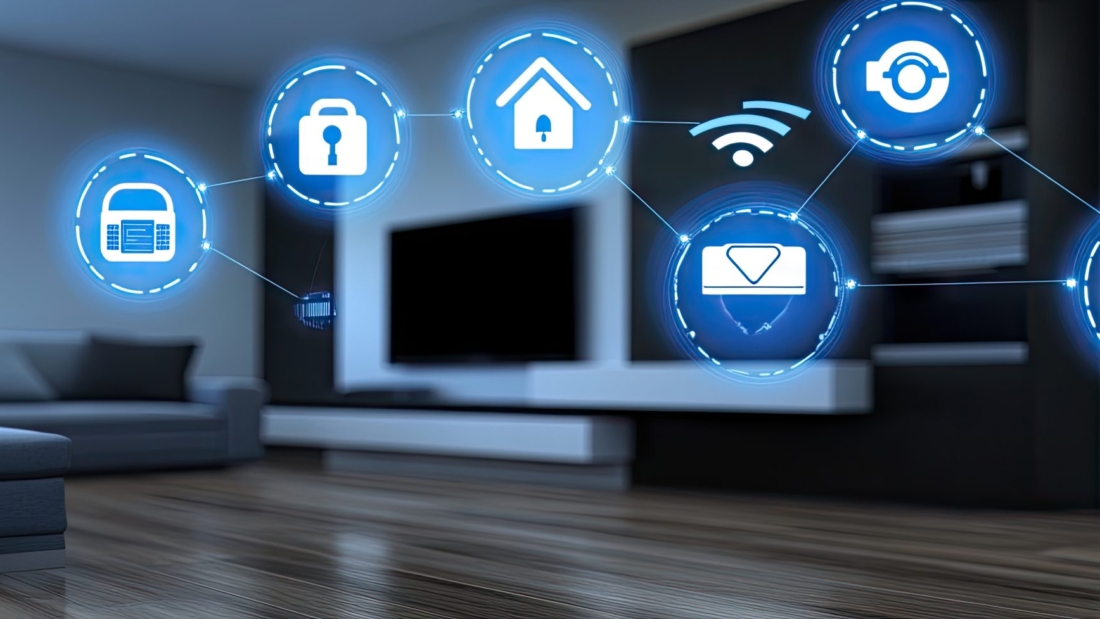When you think of a smart home, what’s the first thing that comes to mind? A Tony Stark-esque mansion perched on the edge of a cliff with automated systems that fulfill you’re
When you think of a smart home, what’s the first thing that comes to mind? A Tony Stark-esque mansion perched on the edge of a cliff with automated systems that fulfill you’re ever whim by just asking Jarvis? Do you think about Jarvis being corrupted to attack the home and others?
Smart homes have evolved in the past decade. HomeTechHacker defines a smart home as a residence equipped with technology that allows for the automation and remote control of various household systems and devices. These technologies typically connect to the internet and can be managed via smartphones, tablets, voice assistants, or other networked devices.
Smart homes are part of the broader category of devices known as the Internet of Things (IoT), which is a network of devices that collect and share data. These objects are all interconnected and you control them with the touch of a button.
According to PCWorld, the AI boom has infiltrated smart home technology. While this has greatly enhanced smart homes, it has also presented many challenges, including cybersecurity.
Forget Hollywood’s version of smart home systems turning rogue, the only threat you should be worried about is the cyber kind.
Below, we’ll explain how to protect your smart home from cyber threats.
Our connected devices have made our daily lives much easier, but as the number of devices grows, so do the safety risks.
Security vulnerabilities of smart IoT devices leave smart homes vulnerable to threats like hacking and privacy breaches.
Even a smart camera can be hacked to spy on our conversations. Think your home speakers are strictly for listening to slow jams? Think again.
Luckily, there are solutions you can implement now:
Always change the default password after setting up your devices. Avoid using easy passwords like your date of birth or second name.
Enable two-factor authentication (2FA) and link your accounts to a trusted authentication app or mobile number.
Keep your devices protected from known vulnerabilities, and authorize automatic software updates or regularly check for updates.
Secure your Wi-Fi with a strong password and use WPA3 if available. Set up a guest network for IoT devices separate from your central network.
Editor’s Note: You can learn additional ways of protecting yourself from IoT devices by following what HomeTechHacker does.
AI and automation are inextricably linked. While offering convenience, hacking, malware, and unauthorized access remain possible dangers.
Home automation misuse can monitor, isolate, and abuse unknowing individuals. Your smart home must be set up to mitigate these risks.
In a worst-case scenario, hackers can access your personal information and commit identity fraud. PayPro Global cites the example of fraud-built-in tools utilized in online payments and advises using similar ones.
Automated online attacks infect IoT-connected devices, adding them to a botnet for future cyberattacks or data theft. Not only are smart homes exposed to these risks; but botnets are a popular modus operandi used by cybercriminals targeting companies with revenue streams and multiple online channels that accept global payments.
Many startups selling SaaS software video games (based on the subscription management model) implement platforms with fraud prevention measures. Machine learning algorithms and risk-based verification prevent unauthorized access and other misuse.
Editor’s Note: If you are looking to learn more about AI or bolster your ability to protect yourself and loved ones from cybercriminals, check out the classes at HomeTechHacker Academy.
Most modern appliances are Wi-Fi enabled. However, it doesn’t mean you should connect them.
During an interview with CBS News, Jason Hiner, editor-in-chief of ZDNet, warned not to connect an appliance to the internet if unable to control it via a connected app.
If putting a device on the Internet isn’t beneficial or necessary, don’t connect it; as simple as that. Remember that every connected device is a potential target for attacks.
Editor’s Note: HomeTechHacker has a great article on IoT devices that can be controlled locally and don’t need to be on the Internet or controlled by the cloud.
Also, prioritize security features when purchasing smart home products, and opt for reputable brands. Limit permissions and data sharing with smart home devices to reduce the risk of unauthorized access and data exposure.
Don’t forget to monitor network traffic and device activity to spot signs of a security breach. Intrusion detection and prevention systems (IDS/IPS) can detect and respond to suspicious activity.
You don’t need to be an IT genius to set up and maintain a smart home system. But you should know the basics of how your home tech works.
Know which processes are automated and governed by AI. Reduce security risks by implementing simple deterrents like changing your device passwords. Keep them protected with software updates, and enable two-factor authentication.
Set up a guest network for IoT devices separate from your main Wi-Fi, and don’t share your network password with just anyone.
Fraud and identity theft are real dangers. Once your sensitive info gets in the wrong hands, it could lead to countless headaches. An intelligent system will protect you from botnets.
And, just because your appliance is Wi-Fi enabled, doesn’t mean you should connect it.
A smart home not only protects your family with innovative security features, it also makes life a whole lot easier. However, pitfalls remain. Considering all of the above is a step closer to keeping your family and data safe.
Related Articles

